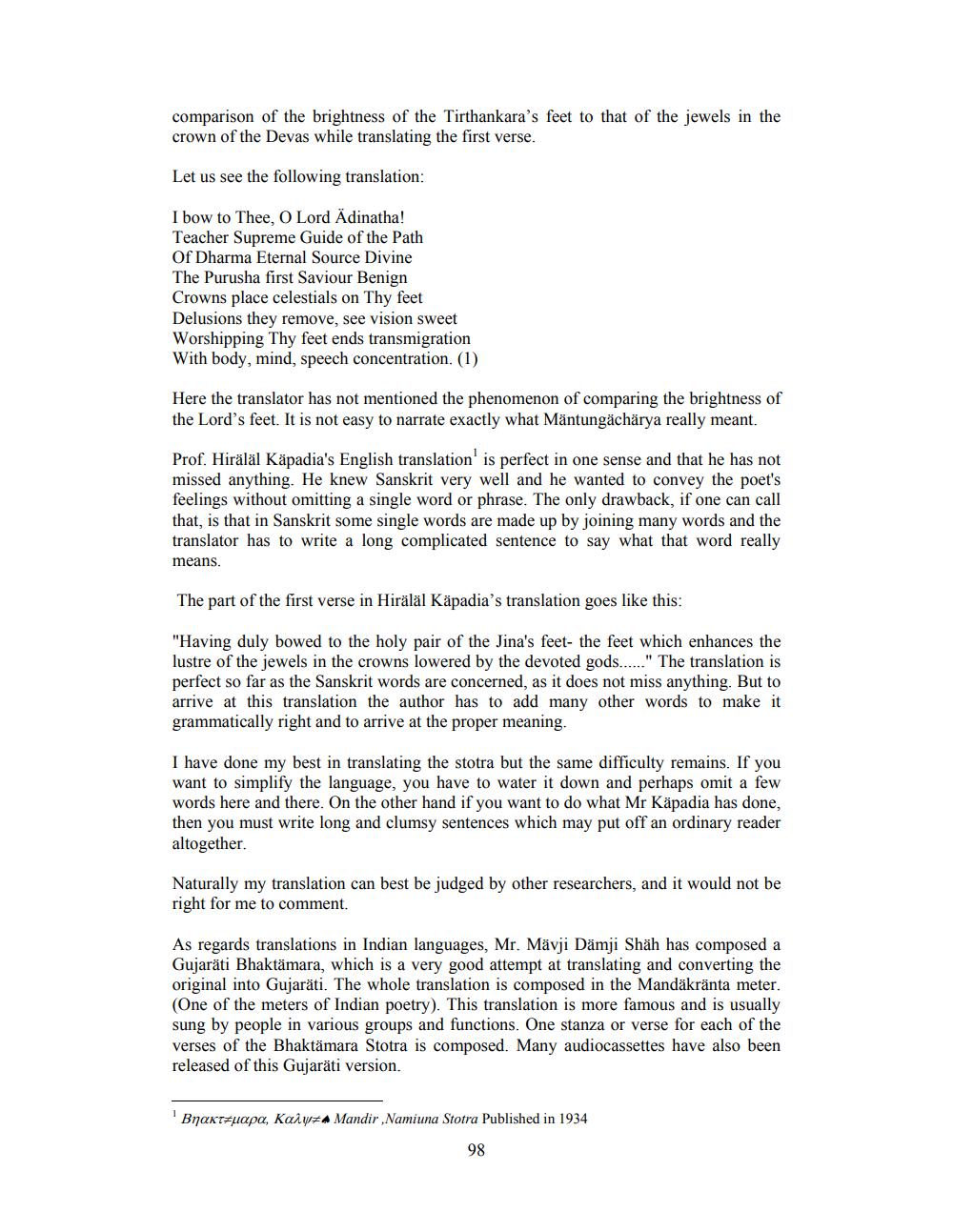________________
comparison of the brightness of the Tirthankara's feet to that of the jewels in the crown of the Devas while translating the first verse.
Let us see the following translation:
I bow to Thee, O Lord Adinatha! Teacher Supreme Guide of the Path Of Dharma Eternal Source Divine The Purusha first Saviour Benign Crowns place celestials on Thy feet Delusions they remove, see vision sweet Worshipping Thy feet ends transmigration With body, mind, speech concentration. (1)
Here the translator has not mentioned the phenomenon of comparing the brightness of the Lord's feet. It is not easy to narrate exactly what Mäntungächärya really meant.
Prof. Hiralal Käpadia's English translation is perfect in one sense and that he has not missed anything. He knew Sanskrit very well and he wanted to convey the poet's feelings without omitting a single word or phrase. The only drawback, if one can call that, is that in Sanskrit some single words are made up by joining many words and the translator has to write a long complicated sentence to say what that word really means.
The part of the first verse in Hiräläl Käpadia's translation goes like this:
"Having duly bowed to the holy pair of the Jina's feet- the feet which enhances the lustre of the jewels in the crowns lowered by the devoted gods......" The translation is perfect so far as the Sanskrit words are concerned, as it does not miss anything. But to arrive at this translation the author has to add many other words to make it grammatically right and to arrive at the proper meaning.
I have done my best in translating the stotra but the same difficulty remains. If you want to simplify the language, you have to water it down and perhaps omit a few words here and there. On the other hand if you want to do what Mr Käpadia has done, then you must write long and clumsy sentences which may put off an ordinary reader altogether.
Naturally my translation can best be judged by other researchers, and it would not be right for me to comment.
As regards translations in Indian languages, Mr. Mävji Dämji Shäh has composed a Gujaräti Bhaktämara, which is a very good attempt at translating and converting the original into Gujaräti. The whole translation is composed in the Mandäkränta meter. (One of the meters of Indian poetry). This translation is more famous and is usually sung by people in various groups and functions. One stanza or verse for each of the verses of the Bhaktämara Stotra is composed. Many audiocassettes have also been released of this Gujaräti version.
Bnakrauapa, Kayu Mandir ,Namiuna Stotra Published in 1934
98




